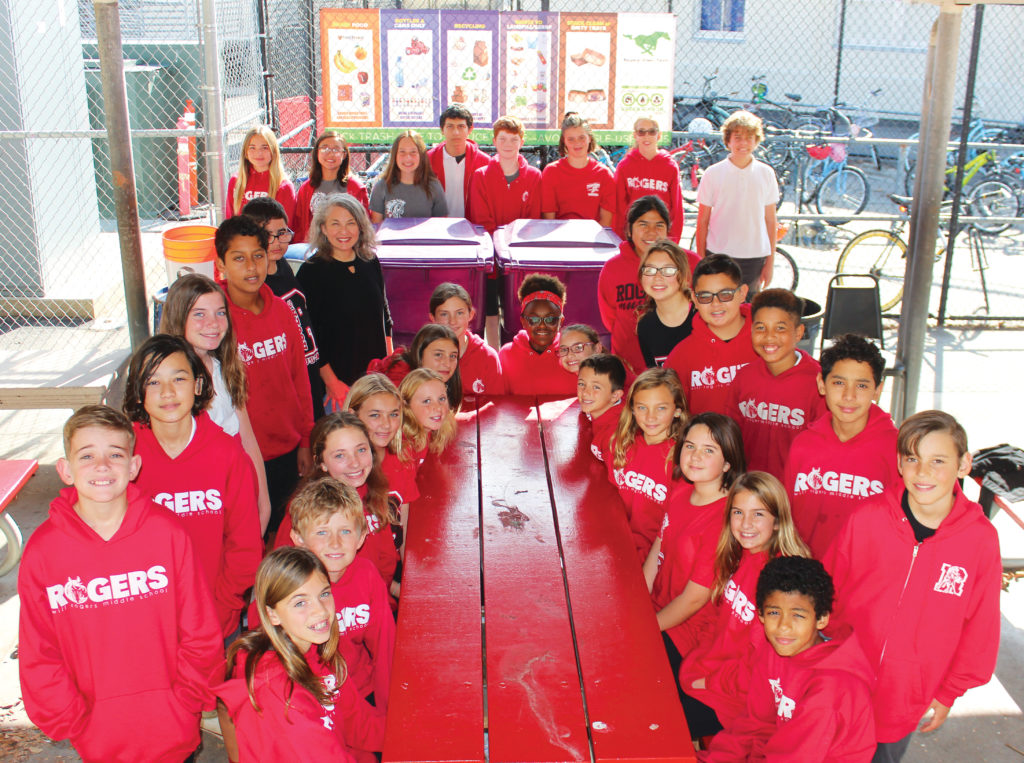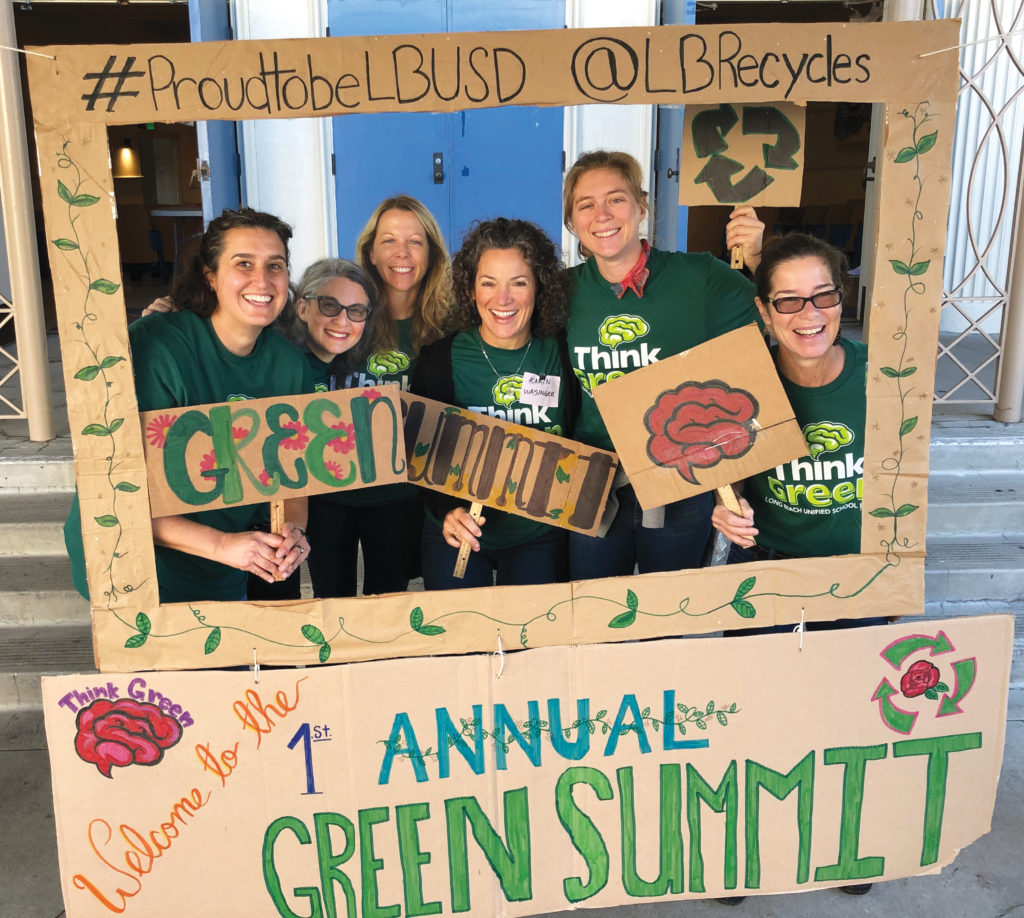Only about 500 feet away from the campus of Rogers Middle School sits Alamitos Bay, and the Pacific Ocean is less than a mile away. So it’s not surprising that students at the school feel particularly connected to issues affecting the world’s oceans, such as plastic pollution.
“I feel like we can impact [the situation] more because we’re closer to the ocean. We have a big impact, because our plastic goes straight to the ocean,” Harper Hogan, a seventh grader at Rogers, explained.

After learning about plastic pollution in their Green Team class, a special elective focused on environmental protection, students at Rogers began researching different ways to reduce plastic waste and how those strategies could be employed at their school. After a year of research, presentations to the school’s parent-teacher association, the school board and even the Long Beach City Council, students and their teachers at Rogers and two other Long Beach schools developed a program aimed at encouraging other campuses to reduce plastic waste.
The work of students and teachers at Helen Keller, Charles Evans Hughes and Rogers middle schools reached a new milestone on Saturday, November 16, when the groups came together to organize the Long Beach Unified School District’s first Green Summit. At the event, which was attended by parents, teachers and administrators from across the district, they presented tools, checklists and a newly devised incentive program for schools to begin separating and reducing waste on campus and beyond.
“One of the biggest things is helping people understand what they can and cannot do, because there was a lot of misinformation out there,” Karin Wasinger, a teacher-librarian at Helen Keller Middle School and one of the initiators of the program, told the Business Journal. This was especially true for one component of the waste separation system proposed by the pioneering schools: food donations.
After their lunch break, students are encouraged to drop off the remaining contents of their lunch trays in separate bins: recycling, trash, liquids and food sharing, for unopened packages of string cheese and the like. The food sharing bin, which takes the form of a cooler to keep perishable items from spoiling, brought up questions about the legality of taking in and storing food on campus, according to Wasinger and her colleagues. At the Green Summit, they set out to clarify guidelines around food sharing, such as maintaining a cooling chain, to mitigate any concerns schools interested in participating may have about this and other elements of their sustainability plan.
“We just wanted to have a [sustainability] plan for all the schools in Long Beach that wanted it,” Rogers student Anika Kerekes noted. In addition to creating a roadmap for schools to become more sustainable in their waste management, teachers secured funding for a rewards program and provided attendees of the summit with forms to order the bins needed to set up their sorting stations, at no cost to the individual school site.
To make this possible, a group of three teachers joined efforts and reached out to the school district, the city’s environmental services bureau and several nonprofits they had already been working with on their individual sustainability projects. “We realized we were all doing the same thing and said, let’s join together,” Danielle Van Divort, a sixth grade science teacher at Hughes Middle School and one member of the core trio behind the sustainability plan, told the Business Journal. As a result, she noted, “we’ve created partnerships that did not exist before between the city and the school district.”

With the roadmap and resource guides in hand, schools interested in participating can begin prepping their cafeterias and lunch areas for the group’s first audit. The group plans to visit participating campuses next spring to check on their progress, with the help of partnering nonprofits and the city’s environmental services staff. Schools that pass the audit receive up to $2,000 out of the district’s pot of unrestricted funds to pay for green projects and enhance their custodial budget.
The Green Summit marked an important milestone in the effort to create a more sustainable school district, but for the students at Rogers Middle School, the task is far from finished. Led by their Green Team teacher, Pamela Weinstein, students are already working on new projects that go beyond waste separation and aim to reduce the amount of plastic used at the school, nearby elementary schools and even by neighborhood residents.
Gigi Monge, one of the students in Weinstein’s class, explained what motivated her to participate in a group that is currently preparing presentations about sustainability to be held at elementary schools. “We think change can start in little kids, because if we teach little kids environmental stuff, things that they can do, we think that when [they] grow up [they] will understand more about the crisis that the earth is going through. And we think that’s really important,” Monge said. “Older generations can change, but it’s harder to make them understand,” one of her classmates, Castin Machul, added.
Another group is tackling the waste produced by the school’s cafeteria. “A ridiculously large amount of school lunches is produced daily for kids who need them and that’s great, because no kids are going to be hungry as a result of that,” Green Team student Wyatt Miller explained. But, he noted, those lunches produce a lot of plastic waste. To reduce it, Miller’s group is planning a pilot program that would eliminate individual cookie wrappers by having cafeteria staff hand out cookies using tongs instead. “Hopefully that works here, and we can say: look, it works at Rogers, why doesn’t it work everywhere else?” he pointed out.
